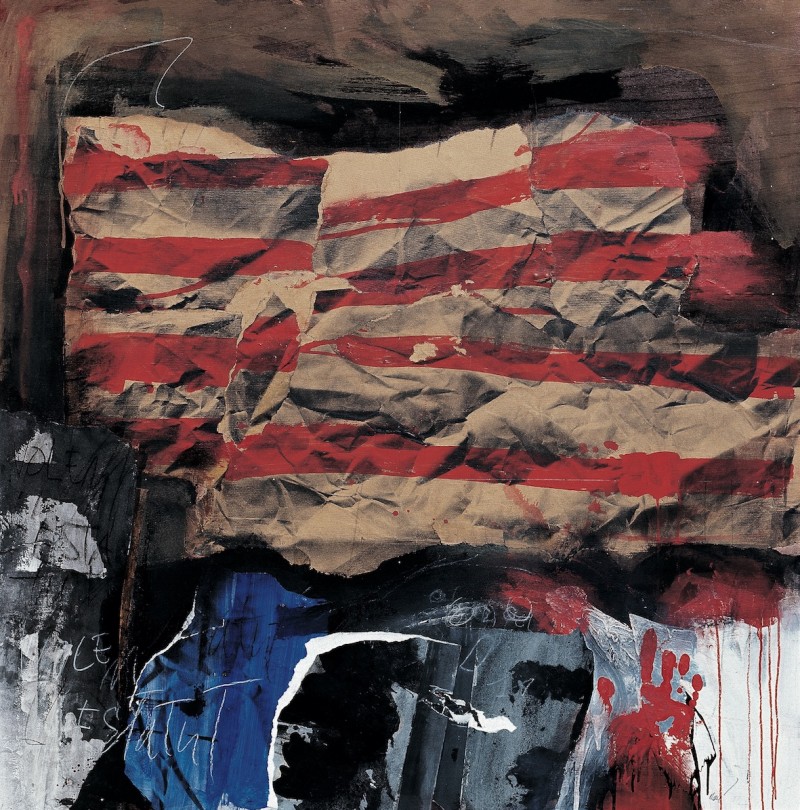Volem l’estatut
Huile et collage sur toile,1977 - (125x125 cm)
The Second Spanish republic starts in 1931. At this time, an autonomous statute governs Catalonia. Catalonian State is proclaimed, suspended and then again reinstalled with the victory of the Popular Front in 1936. This same year, the Spanish war, Franco’s coup, and Nationalists’ victory later in 1939 will put this special statute to an end.It is against that background that Clavé started his career, well aware about political debates agitating Barcelona.
The Catalonian flag, named “the Seneyra”, is divided into four red horizontal strips on a golden background. This flag is one of the most ancient in Europe, supposedly dating back from the Ninth century, and is based on the counts of Barcelona’s shield. It used to be the official flag of Catalonia in the 30s, and it is hence perfectly logical that this element is central to Clavé’s composition. The flag seems to be fluttering in the wind, and reminds us of the tricolour flag waved by La République in “La liberté guidant le peuple” by Eugène Delacroix. It is not a barricade scene, but when having a closer look at the work, one can see that the flag is made of crumpled, ripped, soiled paper that has been glued back together in order to be the base of the red strips of paint. The red colour is splashing and dripping. A character in the foreground, whose hand is bloodlike red, points to this emblem. A few words are completing the composition, and are titling the work “VOLEM L’ESTATUT”
In June 1977, the first democratic elections after Franco’s death are organised by King Juan Carlo Ist. Spain becomes a representative democracy. In Catalonia, the communist and socialist parties win these elections. The Spanish government, led by Adolfo Suárez, restores a provisional government (a provisional Generalitat de Catalunya) and gives a group of Catalonian deputies the task to work on drafting what the statute of the region should be.
It is in this context that Clavé creates this peculiar and claimant work. He revisits “La liberté guidant le peuple”, as a republican and popular icon, which outreach has long gone beyond French borders. But more than simply paying tribute to Delacroix, this work is dedicated to his beloved Catalonia. Clavé’s practice is usually apolitical, this work hence being all the more exceptional.
The project for an autonomous Catalonia is approved in a referendum in October 1979, later ratified par the Spanish senate this same year. This special statute defines Catalonia as a “nationality”, and Catalan becomes an official language, on the same level as Castilian. The Generalitat de Catalunya consists of a Parliament and an executive council, and is in charge of governing Catalonia. His present-day flag is the senyera.

